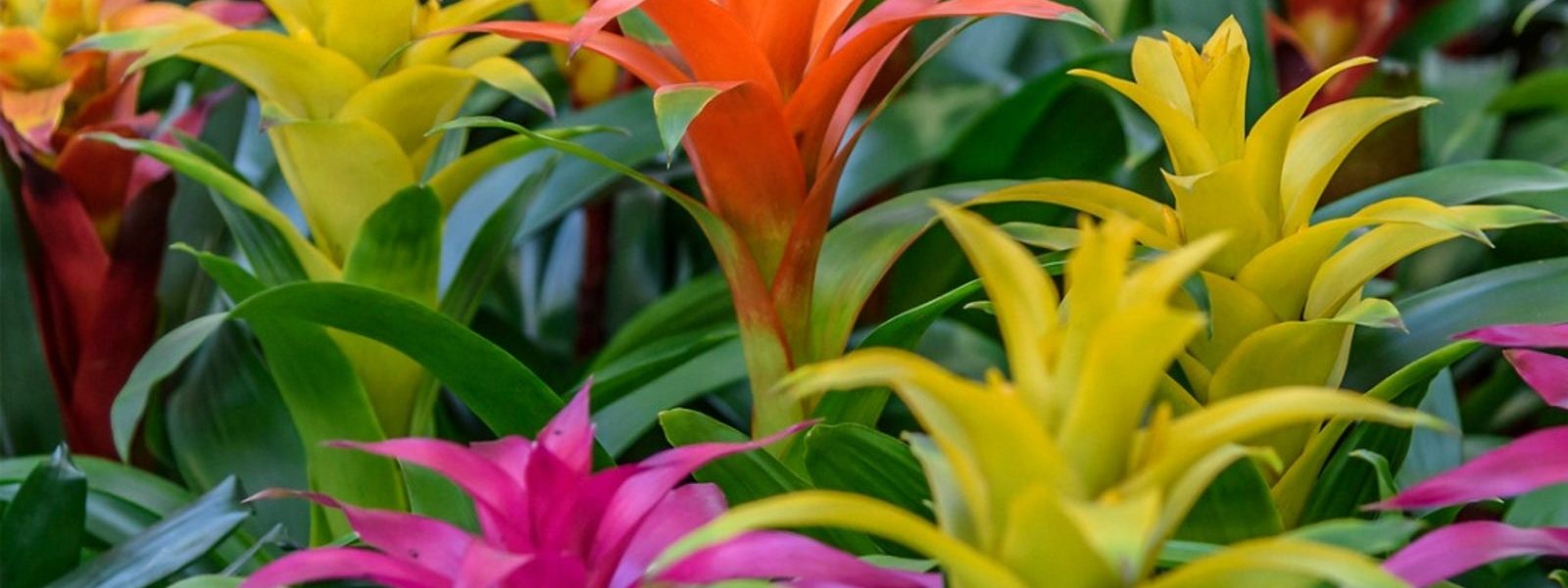Guzmania, a beautiful and vibrant tropical plant, has become a favorite among indoor gardeners due to its stunning appearance and relatively easy care requirements. With its colorful bracts and long-lasting blooms, Guzmania brings a touch of exotic charm to any space. However, like all plants, it requires specific care to thrive. In this guide, we will cover everything you need to know about Guzmania care, from watering and light requirements to dealing with common pests, ensuring your plant remains healthy and vibrant.
What is Guzmania?
Guzmania is a genus of plants that belongs to the Bromeliaceae family. Native to tropical regions of Central and South America, these plants are known for their bright, colorful bracts that surround small flowers. These plants grow as epiphytes, meaning they naturally grow on other plants or surfaces in their native habitats. Their care requirements differ slightly from other houseplants due to their epiphytic nature.
When you take on caring for Guzmania, you’ll be rewarded with a plant that not only adds aesthetic value but also purifies the air, making it a great choice for your home or office.
Light Requirements for Guzmania
The first and most important aspect of Guzmania plant care is ensuring it receives the right amount of light. Guzmania thrives in bright, indirect light, mimicking the conditions of its native tropical habitat. It’s important not to expose your plant to direct sunlight, as this can scorch the leaves and cause the bright bracts to fade prematurely.
For optimal growth, place your Guzmania in a spot with filtered sunlight, such as near a north or east-facing window. If you don’t have access to natural light, Guzmania can also adapt to fluorescent light, which makes it a perfect plant for offices or rooms with limited sunlight.
Watering Your Guzmania Plant
Watering is one of the most critical aspects of how to care for Guzmania. These plants have unique water requirements due to their epiphytic nature. Instead of watering the soil directly, it’s better to water the central “cup” formed by the leaves. This cup holds water, which the plant uses for hydration.
Here’s a step-by-step guide to watering your Guzmania:
- Fill the central cup: Water the central cup regularly, ensuring it is always filled with water. You may need to top it off every few days.
- Water the soil lightly: While the main focus should be on the central cup, it’s still important to lightly water the soil around the roots to maintain overall moisture.
- Use filtered or distilled water: Tap water with high levels of chlorine or minerals can harm Guzmania. Opt for filtered, distilled, or rainwater to avoid issues with water quality.
- Empty excess water: If the water collects at the base of the plant or in the central cup for too long, empty it out to prevent rot.
Guzmania plants are sensitive to overwatering, so be cautious not to saturate the soil too much. Over time, this can lead to root rot, which is one of the most common causes of death for Guzmania plants.
Humidity Needs
Being native to tropical climates, Guzmania care requires a high level of humidity. These plants thrive in environments with humidity levels between 50% and 60%. If you live in a dry area, there are several ways to maintain the right humidity for your Guzmania:
- Use a humidifier: Placing a humidifier in the room where your Guzmania resides will help maintain the ideal moisture level.
- Group plants together: Plants naturally increase humidity by releasing moisture through transpiration. By grouping your Guzmania with other plants, you can create a more humid microclimate.
- Mist the leaves: Lightly misting the leaves once a day can help boost the humidity around your Guzmania plant. However, avoid over-wetting the plant, as this can lead to fungal growth.
Temperature Considerations
Guzmania plants prefer warm temperatures and are not frost-tolerant. The ideal temperature range for caring for Guzmania is between 60°F (15°C) and 85°F (29°C). They can tolerate occasional temperature fluctuations, but it’s important to avoid exposing them to drafts, especially cold air from windows or air conditioners.
Fertilizing Your Guzmania
Fertilizing is another important element of Guzmania care, though these plants don’t require frequent feeding. Over-fertilizing can cause more harm than good. Use a balanced, water-soluble fertilizer diluted to half strength to feed your Guzmania during the growing season, typically from spring to summer. Here’s how to properly fertilize:
- Feed during the growing season: Apply fertilizer every 4 to 6 weeks while the plant is actively growing.
- Avoid fertilizing in winter: Guzmania goes into a dormant period during the colder months, so it’s best to refrain from fertilizing during this time.
- Use a diluted fertilizer solution: Overfertilization can burn the plant, so always dilute the fertilizer to half the recommended strength.
Propagating Guzmania
One of the most exciting aspects of how to care for Guzmania is that these plants can be propagated through pups (offshoots). After Guzmania flowers, it produces pups at the base of the plant. These pups can be carefully separated and planted to grow into new plants.
To propagate your Guzmania, follow these steps:
- Wait until the pups are about one-third the size of the parent plant before separating them.
- Gently remove the pup from the main plant, taking care not to damage the roots.
- Plant the pup in a small pot with well-draining soil, and care for it as you would an adult Guzmania plant.
- Once the pup has rooted and is thriving, it can be moved to a larger pot.
Common Problems and Solutions
Despite its resilience, Guzmania may face some issues. Here are a few common problems and their solutions:
- Brown tips on leaves: This could be a sign of underwatering or low humidity. Ensure the plant receives enough moisture and maintain adequate humidity levels.
- Yellowing leaves: This can occur due to overwatering or poor drainage. If you notice the leaves turning yellow, check for root rot and adjust your watering habits.
- Pests: Guzmania can attract pests such as aphids, mealybugs, or scale. Regularly inspect your plant for any signs of pests, and treat infestations with insecticidal soap or by wiping the leaves with a damp cloth.
Conclusion: How to Ensure a Healthy Guzmania Plant
Caring for Guzmania is not difficult, but it does require attention to detail. By ensuring the plant receives the right amount of light, water, humidity, and temperature, you can enjoy its vibrant beauty for years to come. Whether you’re new to indoor gardening or a seasoned plant enthusiast, following these Guzmania care tips will help your plant thrive in any environment.
Remember that Guzmania is a slow-growing plant, and while it may take time to reach its full potential, the wait is worth it when you see its stunning blooms and colorful bracts. With the proper care, your Guzmania will be a beautiful, long-lasting addition to your home or office.




